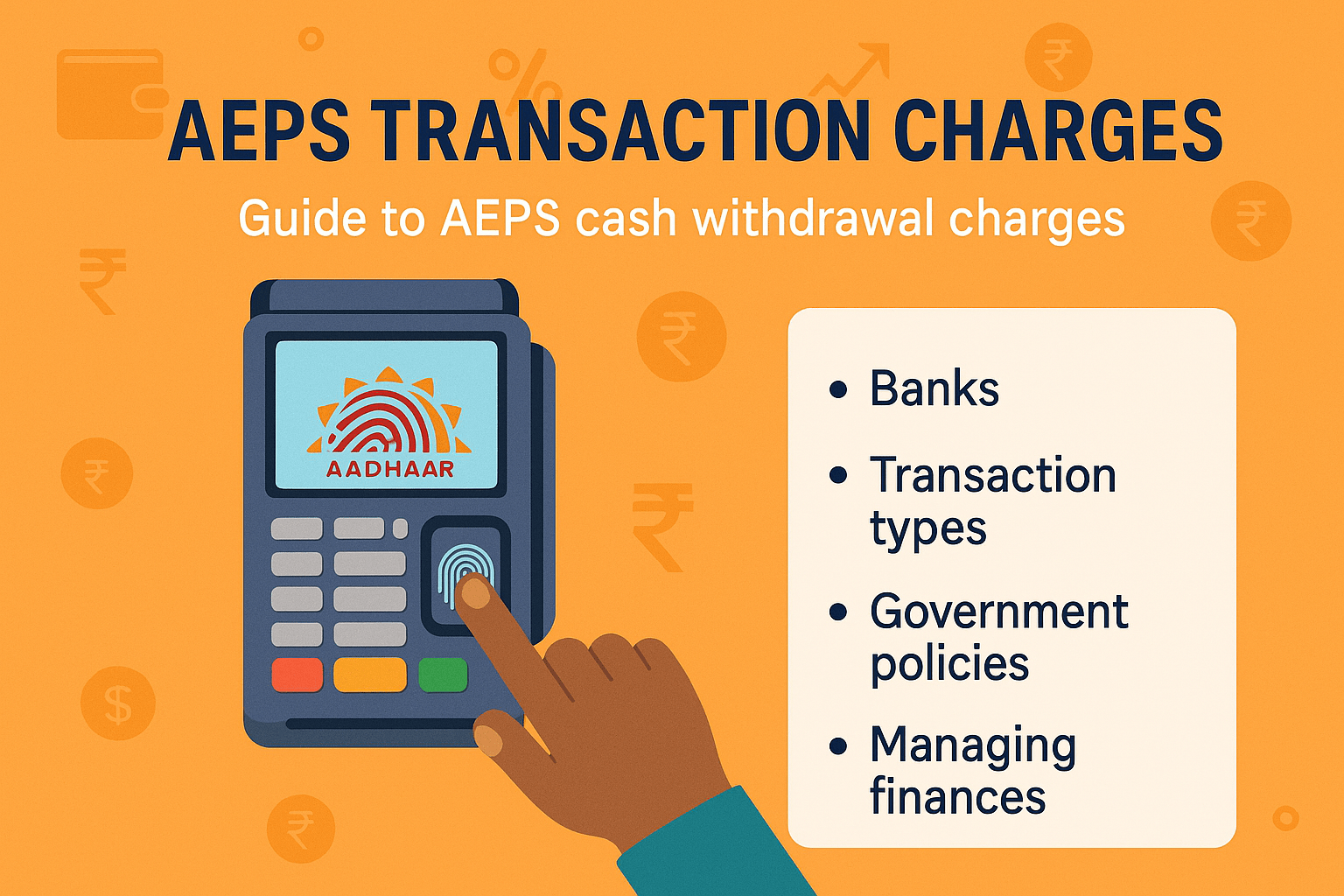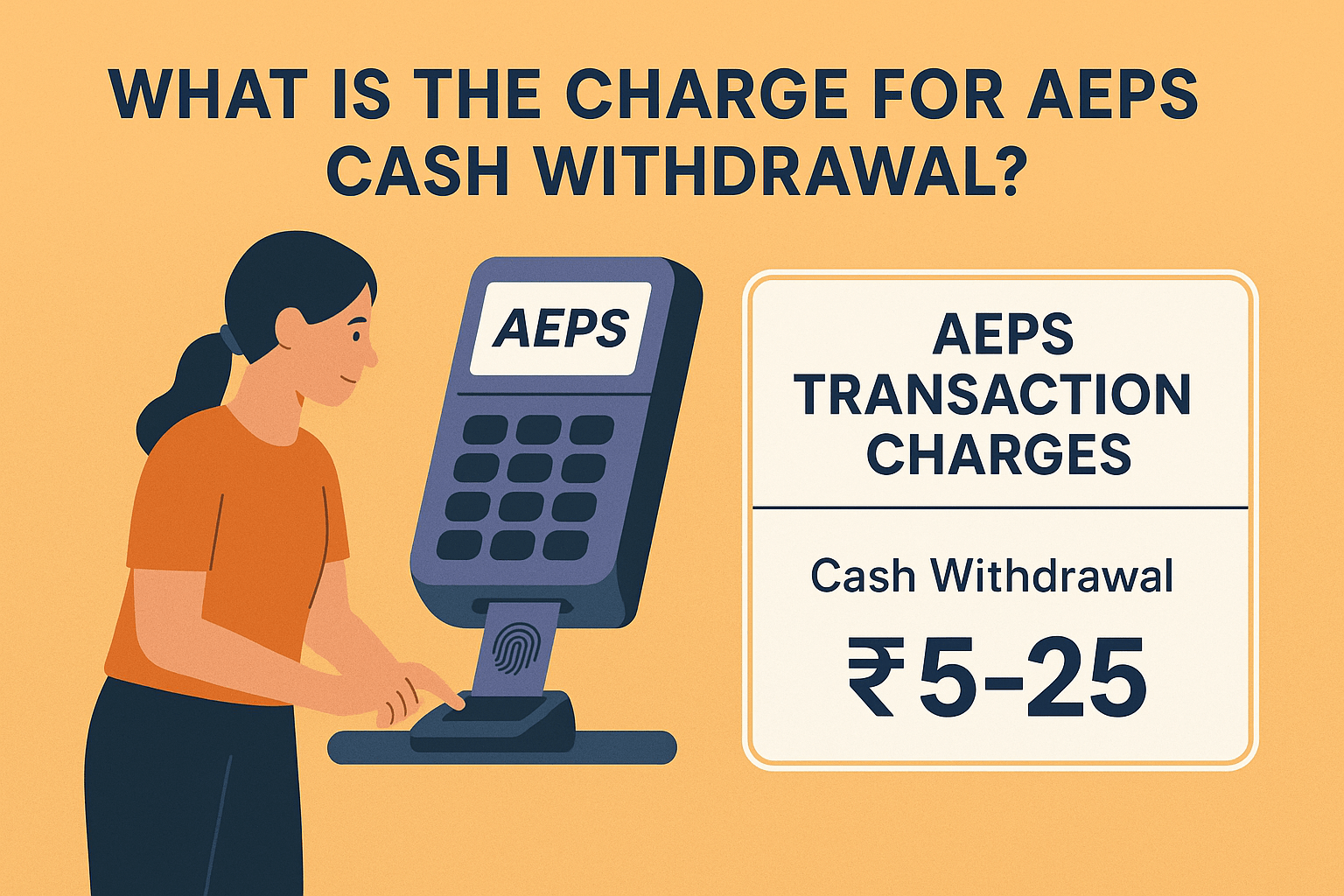In an era where digital finance is king, accessing your money (What is the charge for AEPS Cash Withdrawal) without a debit card or smartphone is still a crucial need for millions. This is where the Aadhaar Enabled Payment System (AEPS) shines. But if you’ve ever used this service, a question inevitably pops up: What is the charge for AEPS cash withdrawal? The answer isn’t a single flat fee; it’s a nuanced picture shaped by banks, transaction types, and government policies. This comprehensive guide will break down everything you need to know about AEPS transaction charges, helping you manage your finances smarter.
Understanding the AEPS Ecosystem
Before we dive into the costs, it’s essential to understand what AEPS is. Launched by the National Payments Corporation of India (NPCI), AEPS is a bank-led model that allows you to perform basic banking transactions at a MicroATM (a handheld device operated by a Banking Correspondent or BC) using only your Aadhaar number and fingerprint authentication.
The core transactions it supports are:
-
Cash Withdrawal
-
Cash Deposit
-
Balance Enquiry
-
Aadhaar to Aadhaar Fund Transfer
-
Mini Statement
Its primary goal is financial inclusion, bringing banking services to the remotest parts of India where traditional bank branches cannot reach.

So, What is the Charge for AEPS Cash Withdrawal?
The charge for AEPS cash withdrawal is not standardized across all banks. However, the NPCI provides a ceiling—a maximum limit—that banks cannot exceed. This structure is designed to keep the service affordable.
Here’s the typical breakdown of who pays what:
1. For Customers (You):
-
The Good News: In the vast majority of cases, you, the customer, are not charged a direct fee for withdrawing your own money via AEPS. This is a significant benefit, especially when compared to the fees charged by some ATMs for transactions beyond the free monthly limit.
-
The Fine Print: While NPCI guidelines state that customer charges should be “nil,” some banks might impose a nominal fee under specific conditions or for certain account types (e.g., no-frills accounts with limited free transactions). It is always best to check with your bank for their specific policy.
2. For the Bank (Your Bank – The Issuer):
Your bank (the one that issued your account) pays a small interchange fee to the bank that owns the MicroATM (the acceptor bank) for facilitating the transaction. This is an inter-bank settlement, and the cost is not passed on to you.
-
For Cash Withdrawal: The issuer bank pays an interchange fee of ₹ 15 to the acceptor bank for every transaction.
-
For Balance Enquiry: The issuer bank pays ₹ 5 to the acceptor bank.
3. For the Banking Correspondent (BC – The Agent):
The individual operating the MicroATM (the Kirana store owner, the BC agent) is a business entity. They are compensated for their service by the bank they are partnered with. They earn a commission on every transaction they process. This commission is paid by the bank, not by the customer directly.
A Practical Example of an AEPS Transaction Flow
Let’s say Ramesh wants to withdraw ₹1,000 from his SBI account at a local shop that has an HDFC Bank MicroATM.
-
Authentication: Ramesh provides his Aadhaar number and verifies his identity with his fingerprint.
-
Transaction Processing: The shopkeeper (BC agent) processes the withdrawal on the MicroATM.
-
Settlement:
-
₹ 1,000 is debited from Ramesh’s SBI account.
-
HDFC Bank (acceptor) facilitates the cash payment.
-
As per NPCI rules, SBI (issuer) pays HDFC Bank an interchange fee of ₹ 15.
-
HDFC Bank then shares a part of this ₹ 15 as a commission with its BC Agent (the shopkeeper) for his service.
-
-
Customer Cost: Ramesh receives his ₹ 1,000 in full. He is not charged any extra fee for this transaction.

Factors That Can Influence AEPS Charges
While the above model is standard, a few things can affect the final cost:
-
Bank-Specific Policies: Some private banks or smaller payment banks might have a different fee structure for their specific BC networks, though they still must adhere to NPCI ceilings.
-
Account Type: Basic savings bank deposit accounts (BSBDA) are mandated to offer a minimum number of free transactions. Exceeding this limit could theoretically lead to charges, but this is extremely rare in practice for AEPS.
-
BC Agent Discretion: It is crucial to note that a BC agent is NOT allowed to charge the customer directly for a transaction. If an agent asks for a “convenience fee,” it is against NPCI and bank guidelines. You should report this to the parent bank.
AEPS Charges vs. Other Cash Withdrawal Methods
How does AEPS stack up against other ways to get cash?
| Method | Typical Customer Charge | Key Benefit |
|---|---|---|
| AEPS (Bank MicroATM) | Usually FREE | No card needed, highly accessible in rural areas. |
| Own-Bank ATM | Free (up to 5 transactions/month in metros) | Widespread, self-service. |
| Other-Bank ATM | ₹21 + GST (for transactions beyond free limit) | Convenience of location. |
| Debit Card (POS) | Free (unless marked as cash advance) | Cashback during shopping. |
As the table shows, AEPS is one of the most cost-effective ways for a customer to withdraw cash, especially in non-urban areas.
Conclusion: A Service Designed for Financial Inclusion
The charge for AEPS cash withdrawal is a carefully designed mechanism that prioritizes the end-user. By ensuring that the customer bears no direct cost, the system encourages adoption among India’s unbanked and underbanked populations. The costs are handled behind the scenes between banks and their agents, making it a seamless and free experience for millions.
The next time you use your Aadhaar and fingerprint to withdraw money, you can be confident that you’re leveraging one of the most inclusive and customer-friendly financial technologies India has to offer. Always remember to get a transaction receipt and report any agent who asks for an unauthorized fee.
Frequently Asked Questions (FAQs)
1. Can an AEPS agent legally charge me a fee for withdrawal?
No. According to NPCI and RBI guidelines, a Banking Correspondent (BC) agent is not permitted to charge you, the customer, any direct fee for an AEPS transaction. Their commission is paid by the bank they are partnered with. If an agent demands a fee, you should refuse and report them to the parent bank.
2. Is there any hidden charge for AEPS transactions?
There are no hidden charges from the bank’s side. The transaction is free for you. The costs are settled between the banks involved. Always check your bank statement to confirm.
3. What is the minimum and maximum amount I can withdraw using AEPS?
Transaction limits are set by your bank, not by AEPS itself. Typically, the maximum limit per transaction is ₹10,000, and the daily cumulative limit is often around ₹25,000. You should check with your bank for their specific limits.
4. What if my AEPS transaction fails but the money is debited from my account?
In case of a failed transaction, the amount is typically automatically reversed to your account within 3-5 working days. If it does not, you should immediately contact your bank’s customer care with the transaction reference number from your receipt.
5. Are AEPS transactions safe?
Yes, they are highly secure. AEPS uses your biometric fingerprint (Aadhaar authentication) which is unique to you. This is more secure than a PIN that can be forgotten or stolen. However, always ensure you use a trusted and authorized agent for your transactions.
Disclaimer: This article is for educational and informational purposes only. The information provided is based on guidelines from the NPCI and RBI as of the date of writing. Banking charges and policies are subject to change. Readers are advised to consult directly with their respective banks for the most current and accurate information regarding transaction charges. If you have any concerns or issues with the content of this post, please visit our DMCA page to understand our content removal guide and process for verifying ownership or addressing complaints.
